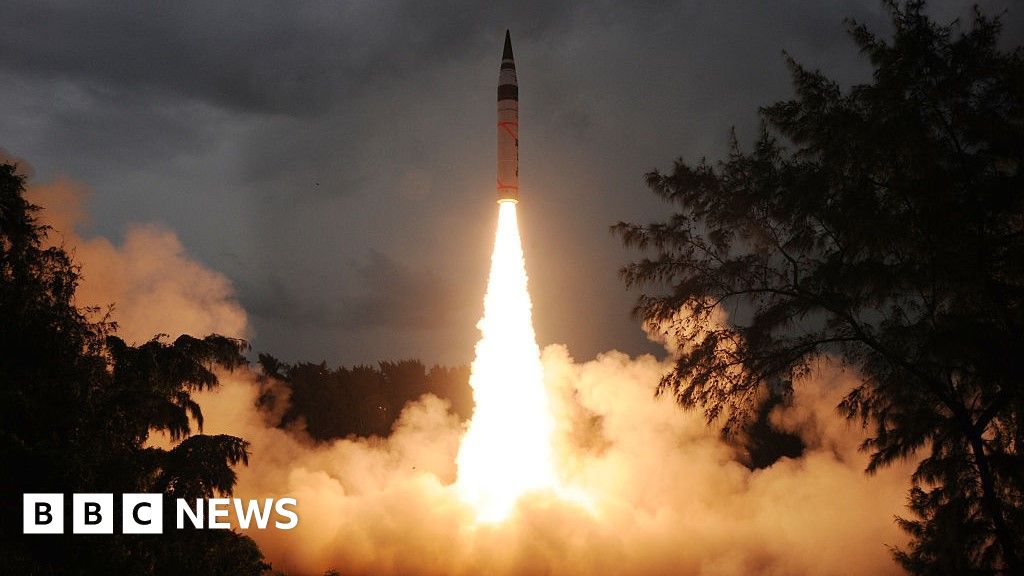The Looming Threat of Nuclear Conflict Between India and Pakistan

In the recent standoff between India and Pakistan, tensions flared but did not escalate into outright conflict, a situation that nonetheless highlighted the ever-present danger of nuclear war in the region. The situation unfolded without public ultimatums or direct threats, yet the undercurrents of military retaliation, covert signals, and urgent international mediation served as a stark reminder of the fragile stability that characterizes this area of the world.
Although the immediate crisis was contained by a ceasefire brokered by the United States, it evoked fears reminiscent of previous confrontations. A study from 2019 by a global team of scientists painted a chilling picture of how quickly an incident could escalate into nuclear conflict. The hypothetical scenario they envisioned involved a terrorist attack on India's parliament in 2025, leading to a possible exchange of nuclear strikes with Pakistan. Fast forward to today, and a real-world confrontation, though temporarily subdued, has rekindled apprehensions about the volatility of peace in this region.
As tensions rose during this standoff, Pakistan sent out “dual signals” — it retaliated militarily while also convening a meeting of its National Command Authority (NCA), which is responsible for managing the country's nuclear arsenal. This move was seen as a calculated reminder of Pakistan’s nuclear capabilities, though it left experts speculating whether it was merely symbolic, strategic, or a genuine warning.
US Secretary of State Marco Rubio reportedly played a critical role in diminishing the escalating crisis, with President Trump asserting that American intervention had successfully averted a potential "nuclear conflict." In a firm address to the nation, Indian Prime Minister Narendra Modi stated, “There is no tolerance for nuclear blackmail; India will not be intimidated by nuclear threats.” He also declared that any terrorist safe havens operating under such pretenses would face stringent responses from India.
According to the Stockholm International Peace Research Institute (SIPRI), both India and Pakistan possess around 170 nuclear weapons each. As of January 2024, SIPRI estimated the global nuclear arsenal to include approximately 12,121 warheads, with 9,585 in military stockpiles and around 3,904 actively deployed, marking a slight increase from the previous year. The majority of both nations' nuclear weapons are deployed via land-based missile systems, although both countries are working towards developing a nuclear triad capable of delivering warheads through land, air, and sea.
Christopher Clary, a security affairs expert at the University at Albany, notes that India likely has a more advanced air delivery capability than Pakistan. He pointed out that while the specifics of Pakistan’s naval nuclear capabilities remain less clear, India's investments in nuclear-powered submarines give it a significant qualitative edge in this arena.
Since both nations conducted nuclear tests in 1998, they have maintained different approaches to nuclear doctrine. Pakistan has not formally declared an official nuclear policy, yet its operational postures can be inferred from statements made by officials over the years. In 2001, Khalid Kidwai, head of the NCA, outlined four conditions (or red lines) that would justify the use of nuclear weapons: major territorial loss, destruction of key military assets, economic strangulation, or political destabilization. Former president Pervez Musharraf clarified that Pakistan’s nuclear arsenal was aimed solely at India, to be used only when the existence of the state was under threat.
Despite these assertions, skepticism exists on both sides regarding the actual threat of nuclear escalation. Ajay Bisaria, a former Indian high commissioner to Pakistan, suggested that claims made by officials regarding the immediacy of nuclear threats were sometimes overstated. Similarly, Pakistani analysts contend that during the Kargil conflict, India was aware that its air force would not penetrate into Pakistani territory, dampening the necessity for any nuclear threats.
Yet, the specter of nuclear escalation looms large, and tensions can ignite not just from deliberate actions but also through accidents. Professor Alan Robock from Rutgers University warns that miscommunications, human errors, hacking, or failures of technology could unintentionally trigger a conflict. An incident in March 2022, where India accidentally fired a nuclear-capable cruise missile into Pakistani territory, underscores this risk. The missile traveled 124 km before crashing and causing damage; it took India two days to issue a public statement following the incident. Experts assert that had this occurred amid heightened tensions, it could have swiftly escalated into a significant crisis.
Despite these potential flashpoints, experts like Clary maintain that the risk of nuclear war, while serious, remains relatively small as long as ground combat does not intensify along the border. He elaborates that in cases of conventional military engagements, the pressure to use nuclear weapons might increase due to fears of losing them in a first strike. Therefore, while the threat of nuclear conflict persists, it often remains in the realm of calculated deterrence, rather than imminent reality.
As the geopolitical landscape continues to evolve in South Asia, the world watches closely, knowing that even a small spark could ignite the nuclear tinderbox that is India and Pakistan.



























